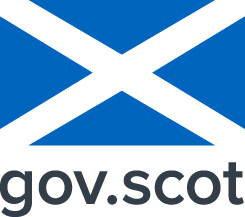Census 2022 - Postcode Units
This dataset contains 2022 frozen Postcode boundaries
Postcode unit boundaries are created and maintained by National Records of Scotland (NRS) for every live small user Postcode so that the entire land surface of Scotland is covered by Postcode polygons.
The dataset represents the smallest plotted unit in Scotland which supports the production of high quality statistics.
The Postcode dataset used for 2022 Census outputs is based on the April Postcode Address File (PAF®) received from Royal Mail®.
The dataset contains 153,192 Postcode polygons.
Default
Identification info
- Alternative title
-
Frozen Postcode 2022
- Metadata Language
- English
- Character set
- UTF8
- Dataset Reference Date (Creation)
- 2024-05-21
- Dataset Reference Date (Publication)
- 2024-05-21
- Identifier
- www.nrscotland.gov.uk / FrozenPostcode2022
- Maintenance and update frequency
- As needed
-
GEMET - INSPIRE themes, version 1.0
-
-
Statistical units
-
-
GEMET - Concepts, version 2.4
-
-
census survey
-
statistical data
-
-
IPSV Subjects List
-
-
Boundaries
-
Postcodes
-
Censuses
-
- Limitations on Public Access
- Other restrictions
- Other constraints
- No limitations to public access
- Use constraints
- Other restrictions
- Other constraints
- Open Government Licence
- Other constraints
-
The following statements must be used when reproducing or using this material: Copyright National Records of Scotland, contains Ordnance Survey data © Crown copyright and database right (insert year).
- Spatial representation type
- Vector
- Denominator
- 10000
- Topic category
-
- Boundaries
- Code
- S92000003
))
Temporal reference
Temporal extent
- Begin
- 2022
- End
- 2022
Temporal extent
- Code
- EPSG:4258
- Code
- EPSG:27700
Distribution Information
Data format
- Data format
-
Name Version WMS
1.3.0
WFS
2.0.0
ESRI Shapefile
1.0
Transfer options
- Resource Locator
-
Protocol Resource Locator Name OGC:WMS
https://maps.gov.scot/server/services/NRS/Census2022/MapServer/WMSServer?request=GetCapabilities&service=WMS PostcodeUnit2022
OGC:WFS
https://maps.gov.scot/server/services/NRS/Census2022/MapServer/WFSServer?request=GetCapabilities&service=WFS CEN2022:PostcodeUnit2022
WWW:LINK-1.0-http--link
https://www.nrscotland.gov.uk/statistics-and-data/geography/our-products/census-datasets National Records of Scotland website
Data quality info
- Quality Scope
- Dataset
- Statement
-
This dataset contains 2022 frozen Postcode boundaries
National Records of Scotland (NRS) Geography first began plotting Postcode boundaries in 1973. The Post Office (as it was at that time) assigned addresses to Postcodes and NRS Geography staff manually traced the boundaries around the addresses using Ordnance Survey (OS) 1:10,000 and 1:50,000 maps to reference the boundary lines. Current digital boundaries are created with ESRI’s ArcGIS platform. Since the introduction of ArcGIS, NRS Geography utilises Ordnance Survey’s (very accurate and detailed) MasterMap as the base map for positioning the Postcode boundaries and grid references.
Postcode boundaries are subject to continuous change due to new addresses, single addresses acquiring large user Postcodes as mail volume increases (e.g. business addresses), and the need to restrict the number of addresses per unit to less than 100.
NRS Postcode boundaries are based on the Postcode Address File (PAF®) received from Royal Mail®. Royal Mail (RM) allocate and maintain Postcodes for the purposes of delivering mail, but do not produce the Postcode boundary dataset, NRS create this.
The PAF data is provided to NRS Geography on a quarterly basis and provide details of new and deleted Postcodes. This information is improved by data from local authorities via the One Scotland Gazetteer. Using all available data, the Geography Branch digitisers update the Postcode dataset, by merging deleted Postcodes into a suitable neighbouring Postcode, and drawing in new Postcodes.
We aim to ensure that the Postcode boundary encompasses all addresses that belong to the Postcode, and can be distinguished as being either urban or rural. In urban Postcodes, we follow the minimum sensible boundary, which is the area necessary to ensure all address content is contained while following features (road centre lines, back garden fences, and/or natural features such as rivers and streams); whereas for rural Postcodes that have scattered housing and farms, the Postcode boundary will normally have fields and open land included.
We compare our Postcode boundary data to the Scottish Address Directory and investigate any discrepancies, correcting our boundaries where possible and if necessary, report back any errors to One Scotland Gazetteer, Ordnance Survey and Royal Mail respectively.
The boundaries are available for two geographic extents:
Extent of the Realm (EoR)
The boundaries in this dataset are to the Mean Low Water mark so that the coastline is extended to be consistent with Local Authorities.
and
Clipped to the coastline with inland water removed (MHW)
The boundaries in this dataset have been clipped to the coastline (Mean High Water Mark) with inland water removed. This version closely represents map users expectations of how a coastal boundary should look.
Inland water has also been removed as listed in the Standard Area Measurements (SAM) produced by the Office for National Statistics.
Metadata
- File identifier
- a517d292-4021-4ba3-8182-e7380ab3f106 XML
- Metadata Language
- English
- Resource type
- Dataset
- Metadata Date
- 2024-05-17T14:18:07
- Metadata standard name
- UK GEMINI
- Metadata standard version
-
2.3
Point of contact
- Organisation name
-
National Records of Scotland
- Position name
-
Geography
- Delivery point
-
General Register House, 2 Princes Street
- City
-
Edinburgh
- Administrative area
-
Scotland
- Postal code
-
EH1 3YY
- Country
-
United Kingdom
- Electronic mail address
-
geographycustomerservices@nrscotland.gov geographycustomerservices@nrscotland.gov.uk
- Role
- Point of contact
 SpatialData.gov.scot
SpatialData.gov.scot